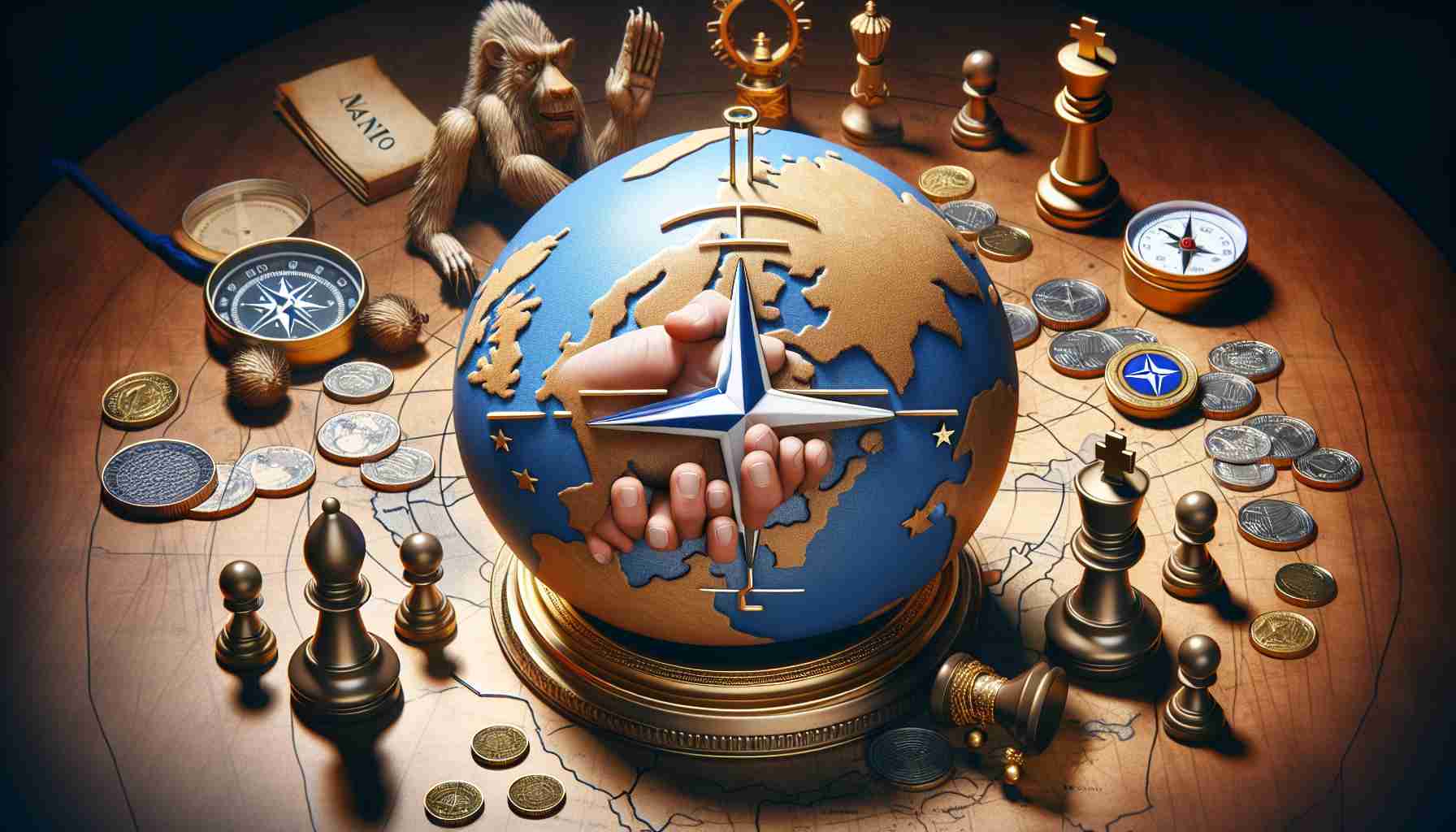- Europe is experiencing uncertainty in its transatlantic partnership with the United States.
- The U.S. is shifting focus to Asia, Latin America, and the Arctic, raising European security concerns.
- The fate of Ukraine is uncertain as Europe questions its security assurances amidst potential U.S. troop withdrawals.
- Ukrainian President Zelensky called for a strong, independent European army, highlighting a desire for self-reliance.
- There are fears of a U.S.-Russia rapprochement, which could alter the geopolitical balance.
- Europe is at a crossroads, with unity and independence seen as crucial to navigating these changes.
A crisp breeze of uncertainty swept through Europe following high-stakes meetings with American officials. As the dust settled, a stark revelation emerged: the transatlantic partnership that had been a cornerstone of global stability now teetered on the brink of transformation. European leaders sensed the gears of history grinding toward a new era, one where reliance on the United States became a precarious gamble.
The core of this concern revolves around the U.S. pivot, drastically shifting its gaze toward untapped potentials in Asia, Latin America, and the Arctic, where mineral wealth beckons. In this shifting landscape, the fate of Ukraine dangles precariously, leaving Europe to question its security assurances as whispers of troop withdrawals echo across capitals.
In Munich, President Volodymyr Zelensky’s voice cut through the cautionary air, echoing the fears of a continent. Calling for a robust “army of Europe,” he visualized a self-reliant force, crafted not under American oversight but through European resolve. This proclamation served as a call to arms and resilience, urging Europe to fortify its defenses against looming uncertainties.
Behind closed doors, apprehensions fester about clandestine diplomatic maneuvers. The specter of a U.S.-Russia rapprochement looms large, with suggestions that President Trump might inadvertently bolster Moscow’s ambitions. European officials watch warily, their imaginations kindled by visions of Trump and Putin sharing a stage in Red Square—a poignant symbol of shifting allegiances.
As Europe navigates this uncertain landscape, the continent stands at a crossroads. Unity and independence might just be the keys to weathering a storm of geopolitical change. The drumbeat of history continues, and Europe’s response may redefine the alliances that shape our world.
Is Europe Ready to Stand Alone? The Shifting Dynamics of Global Alliances
How-To Steps & Life Hacks
1. Strengthening European Defense: European nations could enhance their military autonomy by increasing their defense budgets and fostering collaboration among EU countries. Establishing a centralized command structure can streamline decision-making and operations.
2. Diversifying Economic Partnerships: To reduce dependence on the United States, Europe should pursue strategic economic ties with emerging markets in Asia and Africa. This can involve negotiating new trade agreements and investing in regional infrastructure projects.
3. Investing in Technology and Innovation: To maintain a competitive edge, European countries must focus on advancing their technology sectors. This includes increased funding for research and development in areas like renewable energy, AI, and cybersecurity.
Real-World Use Cases
– EU Defense Initiatives: The European Defence Union exemplifies efforts to create coordinated defense capabilities. This initiative can act as a model for further integration.
– Trade Agreements: The EU-Japan Economic Partnership Agreement is a real-world example of how Europe is expanding trade alliances, a strategy needed in the changing geopolitical landscape.
Market Forecasts & Industry Trends
– Rising Defense Budget: If Europe dedicates itself to becoming more self-reliant, expect a significant rise in military spending. Estimates suggest European defense budgets could grow by about 2-3% annually.
– Increased Euro-Asia Trade: As Europe seeks to lessen its economic dependency on the U.S., trade with Asian countries is predicted to expand by approximately 20% over the next decade.
Reviews & Comparisons
– EU vs. NATO: The European Union offers a political foundation for collective defense, while NATO ensures military collaboration. Prioritizing EU mechanisms may give Europe more autonomy, yet NATO has the advantage of established military protocols and infrastructure.
Controversies & Limitations
– Internal Disagreements: Different threat perceptions and capabilities among EU members may hinder defense cooperation. Countries like France and Germany might disagree on the specifics of military integration, affecting efficacy.
– Economic Constraints: Not all European nations have the financial stability to significantly increase defense spending, potentially leaving economically weaker nations vulnerable.
Features, Specs & Pricing
– Military Assets: Development and procurement of advanced European tanks, aircraft, and navy vessels are crucial. Costs could run into hundreds of billions of euros over the next few decades.
Security & Sustainability
– Energy Independence: Security could be complemented by sustainability efforts, such as investing in renewable energy to reduce reliance on external energy sources, boosting both economic and security resilience.
Insights & Predictions
– Shift from U.S. Leadership: As the U.S. focuses on other regions, Europe’s political landscape will change, possibly leading to a more integrated and robust regional alliance.
Tutorials & Compatibility
– Learning from International Collaborations: Europe’s path to autonomy involves stepping up collaborations within existing structures and better aligning them with national policies.
Pros & Cons Overview
Pros:
– Increased autonomy and self-reliance
– Potentially stronger internal cohesion
Cons:
– Risk of losing U.S. military support
– Financial burden on smaller economies
Actionable Recommendations
– Foster European Unity: Amplify cooperative defense and economic ties across Europe.
– Invest in Self-Reliance: Allocate more resources to build a sustainable European defense industry.
– Pursue Diplomatic Balance: Engage in strategic diplomacy to ensure balanced relationships with both the U.S. and rising global powers.
Recommended Further Reading
– Explore more about European Union’s initiatives.
This strategic shift calls for Europe to reassess its roles and capabilities, crafting a more self-reliant future while maintaining balanced international relations.
